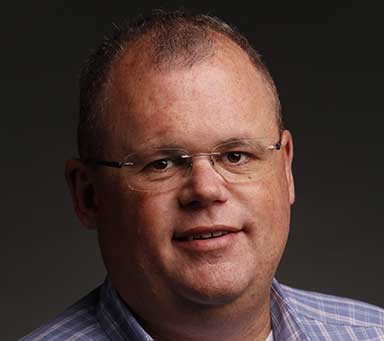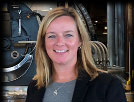It’s 2020, but many manufacturers still rely on 1990 technology. How can they best transition to today’s flexible automation solutions?

These days, any discussion of how manufacturers remain competitive and profitable in effectively responding to changing consumer demands, new markets and new tools and techniques—not to mention the challenge of conducting business during the COVID 19 pandemic— is bound to include mention of Industry 4.0 and Industrial Internet of Things (IIot). But there’s a gap—often a large gap—between the vision and the reality of real-time data drawn from all your business processes to improve efficiencies. .
This is true even of established large manufacturers that have the budget and the resources to implement ongoing automation using modern smart technologies. It’s especially true of smaller manufacturers, particularly those whose Enterprise Resource Planning (ERP) systems date back 20 – 30 years. Even more so for those manufacturers that continue to rely on manual processes that should have been automated years ago.
While manufacturers recognize that their existing tools and methodologies aren’t keeping up, they are hesitant to buy into new technologies. They fear being stuck in a few years as they are today with outdated legacy systems. Equally so, they often do not have the budget nor the in-house expertise to properly automate their operations.
Doing nothing and maintaining the status quo, however, is not an option. Not if you want to be in business ten years from now.
Keep in mind that every manufacturer is trying to figure out which Industry 4.0 practices and technologies will optimize their workflows and how their legacy systems integrate into that solution. So, you don’t need rush into anything in an attempt to play catch-up. Because almost no one is there yet.
“Where manufacturers are today with Industry 4.0 and IIoT is sort of like where industry was fifteen, twenty years ago when RFID (Radio Frequency Identification) was first introduced,” notes Kevin Cammet, Vice President at Radley Corporation, an EDI (Electronic Data Interchange) and manufacturing software solutions company. “It’s only recently that RFID is widely used and businesses are able to effectively integrate the technology into their systems and make full use of the generated data.”
So how exactly do manufacturers close the gap from what their legacy systems do today to what they need their systems to do today and tomorrow? There are five considerations.
1. Focus on Key Needs
You’re not going to transform your entire operations overnight. Instead focus on a key need to automate a particular process. It could be inventory management, order entry, whatever key business interactions your legacy systems are currently handling inefficiently.
2. Look for a “Future-Proof” Solution that Easily Integrates
While there may be situations in which replacing an existing ERP may be advisable, in most cases you can integrate new solutions into your existing platform. The solution must be able to adapt quickly to customer needs and business changes. This likely involves a combination of hardware and software that is easily re-configurable and upgradeable to scale for future needs. Cloud-based platforms provide the best cost advantages to achieve this, as well as offering high levels of security.
Keep in mind that the right software provider should be willing to complete all the necessary steps to ensure your new solution will meet your end goals. Do a proof-of-concept, test and validate, reconfigure if needed, and then implement. Use this implementation as a building block to automate and integrate the next set of workflows.
3. Engage Stakeholders
Change can be intimidating. Get your people and partners on board. Educate stakeholders on what is going to change, how it is going to change, and why it needs to change. Moreover, solicit stakeholder input into making the change as effective as possible.
4. Evaluate Data
Initially, the implemented solution may generate more data than you’ll know what to do with. Look for a solution with easy-to-read graphic dashboards that allow you to find the data you want to know, as well as learn about the data you didn’t know about, but need to think about. Proper analysis results in continuous process improvements
5. Improve Connections
The ultimate objective of any solution is to improve communications. With customers, suppliers, employees and other stakeholders, accessible by any kind of device from anywhere, anytime. The more connected you are, the better your ability to make on-the-spot adjustments and respond to changing business needs.
Want to learn more? Join Kevin Cammet and Deanna Self for a live Industry Today webinar on November 12 at 1pm EDT/10 am PDT to learn more about how manufacturers can mind the missing gaps in their business systems. Register here.

Kevin Cammet
Vice President @Radley Corporation

Deanna Self
Deanna Self is a manufacturing, transportation, and logistics executive with Zebra Technologies. She is an industry veteran, with over 25 years of in-depth knowledge and experience in sales, operations, and information technologies. Deanna consults with and brings insights to help transform businesses with new and sustainable technology solutions.
Prior to Zebra Technologies, Deanna spent over two decades in the food and beverage industry. She started out with owning and operating her own distributorship to most recently overseeing information and technology for the Nestle USA Sales division.
She holds a Master of Business Administration (MBA) from Queen’s University of Charlotte.
In this episode, I sat down with Beejan Giga, Director | Partner and Caleb Emerson, Senior Results Manager at Carpedia International. We discussed the insights behind their recent Industry Today article, “Thinking Three Moves Ahead” and together we explored how manufacturers can plan more strategically, align with their suppliers, and build the operational discipline needed to support intentional, sustainable growth. It was a conversation packed with practical perspectives on navigating a fast-changing industry landscape.